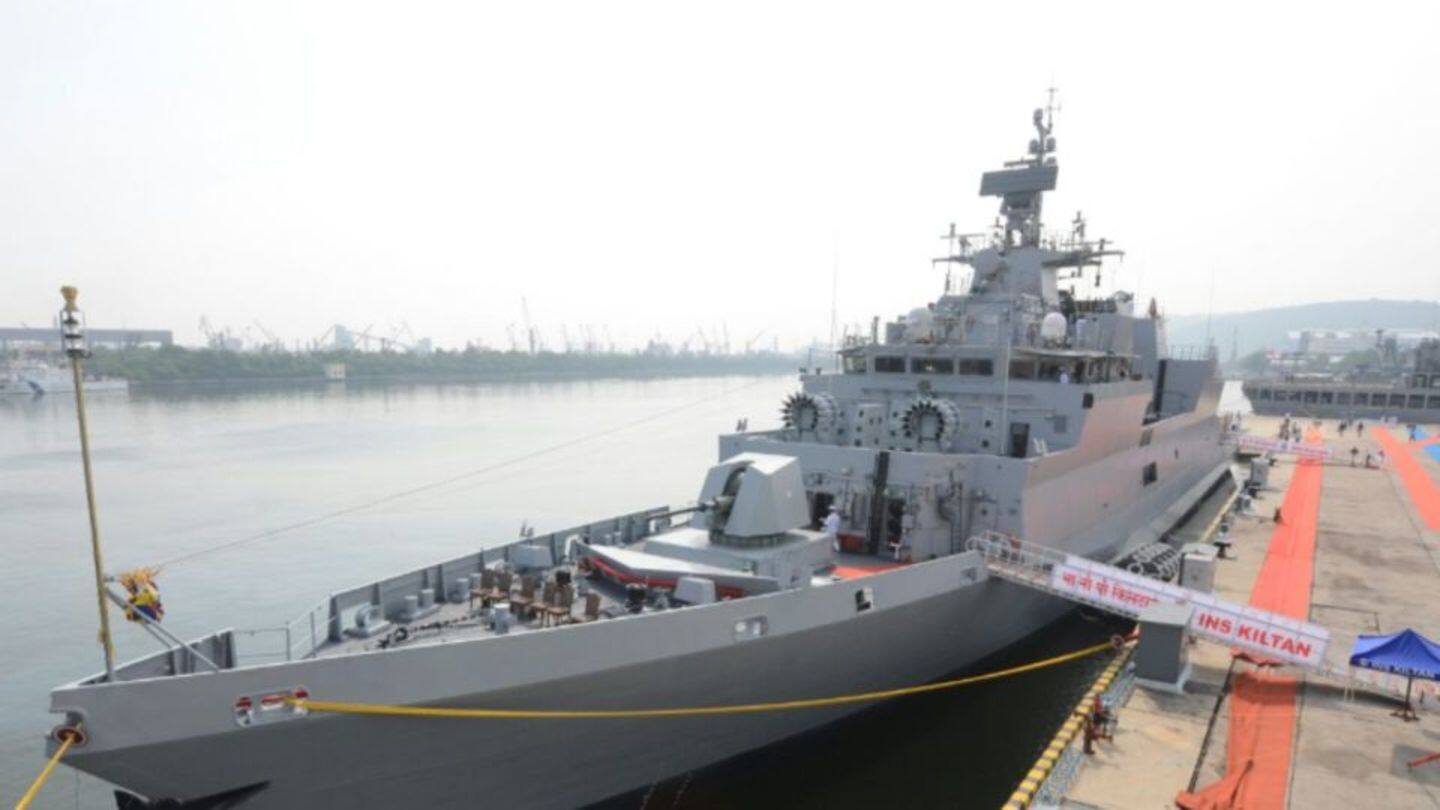
Indian Navy commissions submarine hunter INS Kiltan
What's the story
Defense Minister Nirmala Sitharaman has commissioned INS Kiltan, the third of the Indian Navy's advanced Project-28 Kamorta-class anti-submarine warfare corvettes. The stealth warship has a formidable indigenously-developed weapons arsenal and a high-tech sensors suite integrated to give the Navy a "common operational picture." It's tasked with detecting and neutralizing enemy submarines even as China steps up its undersea forays in the Indian Ocean.
Twitter Post
Sitharaman commissions IN Kiltan
Smt @nsitharaman unveils the plaque at the Commissioning Ceremony of the INS Kiltan at the Vizag Naval Dock Yard pic.twitter.com/d9xH0HTZZD
— Raksha Mantri (@DefenceMinIndia) October 16, 2017
Armament
Kiltan armed with torpedoes, sub-hunting radars and guns
The warship features a number of indigenous weapons such as heavyweight torpedoes, anti-submarine warfare rockets, and 76mm caliber medium range gun. It has two multi-barrel 30 mm guns as a close-in-weapon system (CIWS) having dedicated fire control systems. The Kiltan comes with missile decoy rockets (Chaff), advanced ESM (Electronic Support Measure) system, advanced bow-mounted sonar, and air surveillance radar Revathi.
Details
Significance of Kiltan's name
The INS Kiltan is the third of the Kamorta-class corvettes commissioned by the Navy after INS Kamorta and INS Kadmat. The ship is named after one of the Aminidivi group of islands situated strategically between the Lakshadweep and Minicoy group of islands. It is renamed after the USSR-built erstwhile Petya-class corvette 'Kiltan' which served during the 1971 Indo-Pak war.
Information
Kiltan's superstructure made of carbon-fibre composite material
The Kiltan is the first-ever major Indian warship to feature a superstructure made of carbon-fiber composite material. This reduces its overall weight by 100 tons (compared to its preceding sister ships), according to Live Fist Defence. This makes the Kiltan faster, stealthier and more robust.